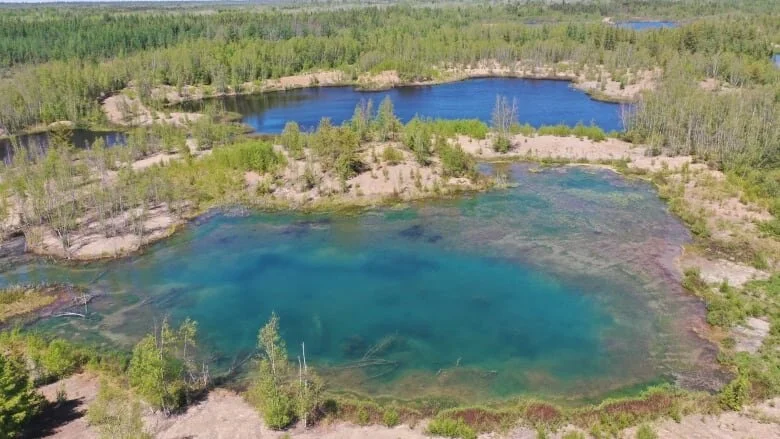"Every one of these bodies of water are man-made — there's hardly any natural ones here," he said, adding that some of the ponds are more than 30 metres deep. Allison Enright, an assistant professor of aqueous and environmental geochemistry at the University of New Brunswick, has studied the water at the former coal-mining site. She said there are tiny sediment particles in the water, remains from the mining activity and invisible to the naked eye. "They tend to stay floating or suspended within the water of the lake, and then this interacts with the light on the surface and in the water body to give you this really bright blue colour," she explained. As for why some of the ponds are a different colour blue, Enright said it just depends how much sediment is in each body of water. Despite the peculiar hues, she said, it's not dangerous. "In this area, over several decades of efforts to remediate, the pH of this water has been made completely safe," she said.
Environment Canada resuming water monitoring in Mackenzie River Basin, still no consultation with Northern leaders
Dene National Chief Norman Yakeleya said that the issue of water safety, especially flowing from the oil sands, has been a concern for as long as he has been Chief. In a tele-press conference Yakeleya told media that he is “befuddled as to why an essential service, such as monitoring the quality of the water coming from the oil sands production fields, was suspended.” He said that water is essential for drinking, for fish, for the animals, and “for the sake of all people in the Northwest Territories.”



